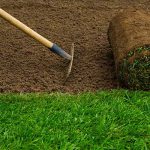Grass Grub (Costelytra zealandica) also known as Brown Beetle is a native species that like many biting and chewing insects has a distinct annual life cycle. The adults emerge from October through until February and lay eggs in the soil. They also feed on foliage and may occasionally strip the leaves of cherry and plum trees. The larvae hatch from the eggs after 2 weeks and then inhabit the root zone (20mm – 30mm deep) from March until June eating the roots of susceptible species. After this time they descend to a depth of 150mm – 300mm where they overwinter. The damage they cause to plant roots reduces the plants ability to uptake water and the outcome is patches of dead grass particularly through times of drought or sustained moisture stress. The grubs vary in size from 10mm – 15mm in length and are creamy white colouration with a black abdomen. Flocks of birds particularly starlings feeding in turf often indicate a heavy infestation of grass grub.
Insect Control
Grass Grub
Argentine Stem Weevil
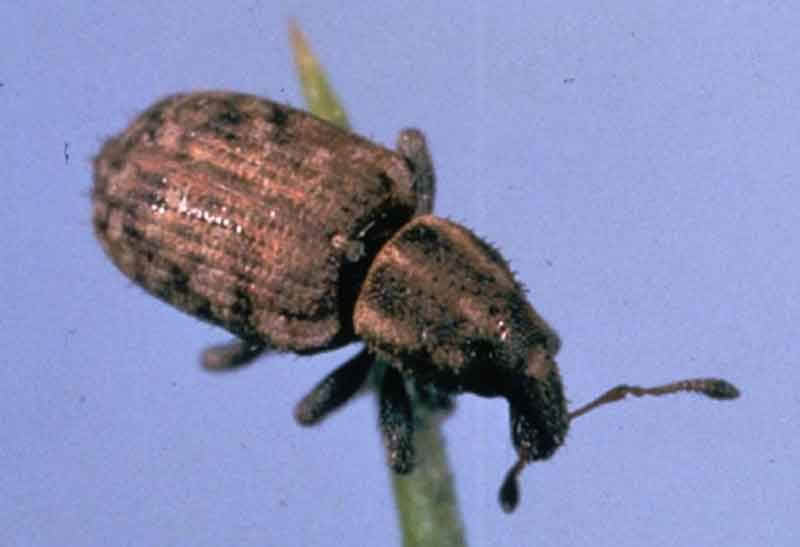
Black African Beetle Adult
Black Beetle(Heteronuchus arator) It is generally found in the top half of the north island though it has been reported as far south as Wellington. Originally it was a native from South Africa although it has now been in both NZ for a long time. The adult black beetle is approximately 15mm long and has a shiny, black and sturdy in appearance. As an adult it can be found throughout the year but most predominantly from the months of February through until October. The adults burrow into the soil where they also consume the roots of grasses. The larvae which are larger than the larvae of the grass grub are creamy white in colour with a black head and abdomen. They live in the top 20mm – 50mm of the soil profile where they eat the roots of susceptible species with the majority of the damage done from October through until March. The damage is obvious after a period of hot, dry conditions when the affected plants struggle to uptake sufficient moisture as a result of their impaired root function. Without regular irrigation these plants will desiccate and die. For that reason treatment is recommended in October and November prior to the worst of the damage occurring.
Black African Beetle
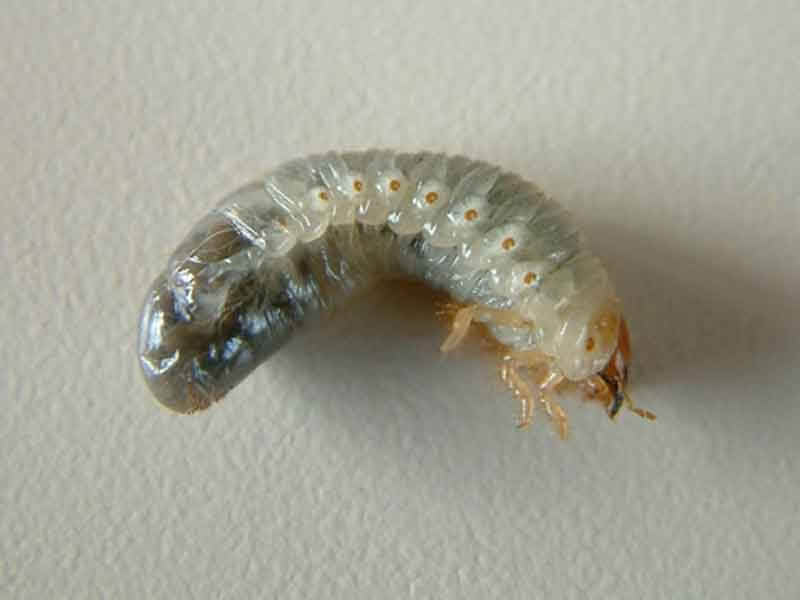
Black Beetle(Heteronuchus arator) ) It is generally found in the top half of the north island though it has been reported as far south as Wellington. Originally it was a native from South Africa although it has now been in NZ for a long time. The adult black beetle is approximately 15mm long and has a shiny, black and sturdy appearance. As an adult it can be found throughout the year but most predominantly from the months of February through until October. The adults burrow into the soil where they also consume the roots of grasses. The larvae which are larger than the larvae of the grass grub are creamy white in colour with a black head and abdomen. They live in the top 10mm – 50mm of the soil profile where they eat the roots of susceptible species with the majority of the damage done from October through until March. The damage is obvious after a period of hot, dry conditions when the affected plants struggle to uptake sufficient moisture as a result of their impaired root function. Without regular irrigation these plants will desiccate and die. For that reason treatment is recommended in October and November prior to the worst of the damage occurring.
Black Cricket
These are also known as Black Field Crickets or simply field crickets. They are generally found on clay soil types over summer when cracks in the ground profile create an ideal environment for them to live. The crickets live in these cracks or holes in the ground and emerge to feed on the leaves of the grasses often severing leaves and taking them back to their burrow to eat. They take the closest plants first and as a result a bare patch around their home is very evident. The majority of the damage is visible over the summer months from January until April. They are visible during the day and move quickly when disturbed by foot traffic.
Porina Caterpillar
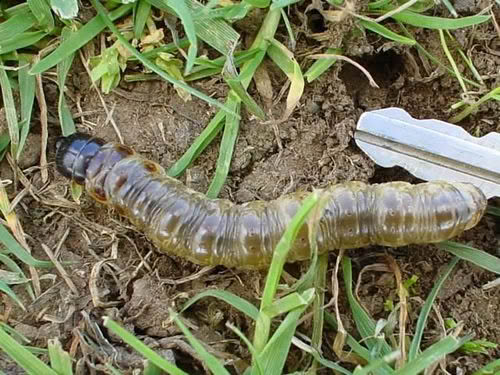
Porina (Wiseana spp.) comprises several species of native moth whose caterpillars are common pest of turf. These large caterpillars are approximately 50 – 75mm long when mature and are grey to greyish yellow in colouration. They live in shallow vertical tunnels and emerge at night to feed on grass leaves. Turf damage around the tunnels is particularly noticeable from autumn onwards.
Sod Webworm
The term Sod Webworm is used to denote the species that includes Eudonia spp., Orocrambus spp. and Scoparia spp. The adults emerge as moths from September through until December. These adult moths feed on clover and the flowers of native plants. Egg laying continues until late February. The resultant caterpillars live in shallow burrows in the ground and emerge to eat the foliage of surrounding grass plants. Damage is known to occur from January until as late as October however typically the majority of the damage is seen occurring during the period February – June. The caterpillars range from 10 – 20mm in size and are generally green with dark green spots located in lines down the length of the body. Because they live in shallow burrows, heavy rain on flat ground is known to reduce numbers through drowning of the caterpillars. No pesticides are registered specifically for sod webworm control after cultivation, however, any products containing chlorpyriphos or pyrethroid should provide effective control if applied in autumn when their activity is at a peak.
Tasmanian Grass Grub
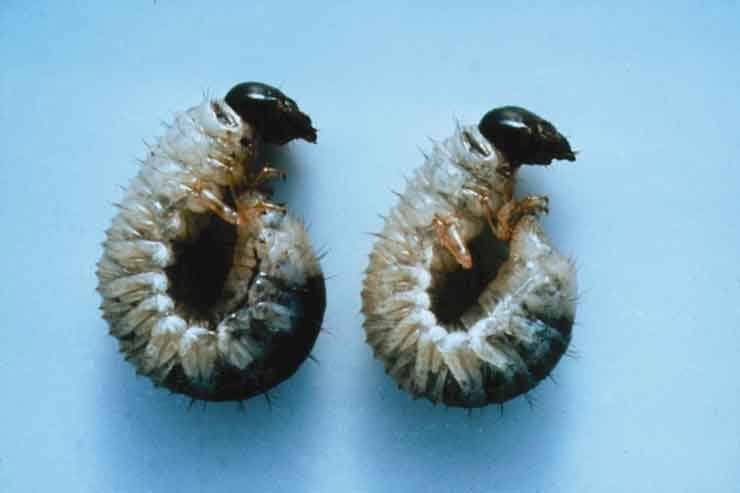
Tasmanian Grass Grub (Acrossidius tasmaniae). This species is often confused with Black Beetle as both the adults and the grubs look similar. However, the grubs which unlike Black Beetle live in small burrows near the surface and emerge to eat foliage near the tunnel entrance. They create damage from the period May through until November, with the adults emerging in December and January.







